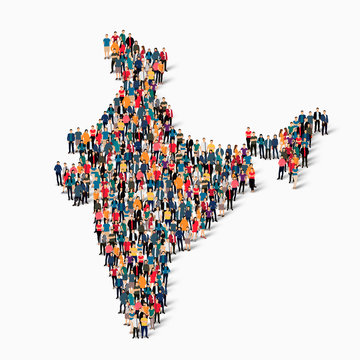Context
India is undergoing a significant demographic transition marked by a decline in its fertility rate. The projection by the UN Population Division suggests that India's population may reach close to 1.7 billion by 2065 before it starts declining. This overwhelming size has overshadowed debates on other aspects like age structure, quality of the population, and its contribution to economic growth. However, a recent report from The Lancet indicates a notable shift, projecting India's total fertility rate (TFR) to decrease to 1.29 by 2051. While this estimate comes with a range of 0.97 to 1.61, its scientific rigor in methodology offers intriguing insights into India's population dynamics.
|
What is Total Fertility Rate? ● The total fertility rate (TFR) represents the average number of children a woman is expected to have throughout her reproductive years, based on the current age-specific fertility rates within the population. ● When the TFR reaches approximately 2.1 children per woman, it's termed Replacement-level fertility. If the TFR falls below 2.1 children per woman, it suggests that each generation is not producing enough offspring to sustain the population, potentially leading to a decline in overall population numbers over time. |
Impacts on Dependency Ratio and Economic Growth
The decline in India's total fertility rate heralds a decrease in the dependency ratio, with a larger proportion of the population comprising working-age adults. This demographic dividend can potentially spur economic growth by generating surplus income and facilitating positive intergenerational transfers. However, as observed in countries like China and Japan, this demographic transition may eventually lead to a rise in the elderly dependent population, necessitating comprehensive strategies to address their needs and ensure sustainable economic development. It's noteworthy that projections from The Lancet suggest India's population may stabilize below the 1.7 billion mark much before 2065, contrary to earlier estimates by the UN Population Division.
Moreover, the uneven pace of fertility decline across states underscores the importance of targeted interventions, particularly in populous states like Uttar Pradesh and Bihar. Achieving replacement-level fertility rates is crucial for stabilizing the population and optimizing resource allocation. While challenges persist, such as inter-district variations and disparities in educational attainment, proactive measures can mitigate potential adverse effects and capitalize on the demographic dividend.
Educational Implications
A declining total fertility rate inevitably impacts educational enrollment, as evidenced by trends in states like Kerala. While this could potentially improve educational outcomes without additional resource allocation, attention must shift towards addressing dropout rates in middle and higher education. Investing in technical and professional education is imperative to harness the full potential of the workforce and meet evolving labor market demands. Moreover, empowering women through education and skill development is essential for enhancing their participation in the workforce and narrowing gender disparities. It's worth noting that projections from The Lancet suggest a decline in the total fertility rate, potentially leading to a situation where the number of children enrolling in schools is lower, necessitating a focus on middle and higher education to capitalize on this demographic transition.
Workforce Dynamics and Sectoral Redistribution
The demographic transition in India is reshaping workforce dynamics, facilitating a shift from traditional sectors like agriculture towards industries and services. This sectoral redistribution is crucial for sustaining economic growth and fostering inclusive development. Skill development initiatives, particularly among marginalized communities like Scheduled Castes, Scheduled Tribes, and religious minorities, can ensure a steady supply of skilled labor to meet the demands of modern sectors. Additionally, the north-south movement of labor is emerging as a key factor in achieving spatial balance in the labor market, driving improvements in working conditions and wage equality for migrant workers.
Challenges and Opportunities for Women in the Workforce
One significant implication of declining fertility rates is the potential increase in women's workforce participation. With fewer childcare responsibilities, more women are expected to join the labor force in the coming decades. Addressing barriers to women's employment and promoting gender-inclusive policies are critical steps towards maximizing the economic contributions of women. Initiatives like the Mahatma Gandhi National Rural Employment Guarantee Act (MNREGA) have already demonstrated the potential for women's participation in the labor market, particularly in southern states. Projections from The Lancet emphasize the importance of skill development and increasing the work participation rate of women to compensate for the declining share of the working-age group in the population.
Conclusion
India's declining fertility rate presents a complex array of challenges and opportunities across various sectors. While the demographic transition holds the promise of enhanced economic growth and improved educational outcomes, proactive policymaking is essential to address disparities and ensure inclusive development. By investing in skill development, promoting women's participation in the workforce, and fostering sectoral redistribution, India can harness its demographic dividend to emerge as a major actor in the 21st-century global landscape. However, realizing this potential requires a concerted effort to navigate the evolving demographic dynamics and capitalize on the opportunities presented by this demographic transition. The revised projections from The Lancet offer valuable insights into the potential trajectory of India's population dynamics, urging policymakers to adapt strategies accordingly.
|
Probable Questions for UPSC Mains Exam
|
Source – The Indian Express







